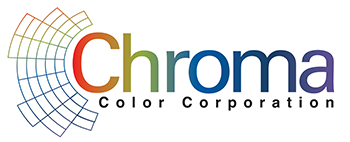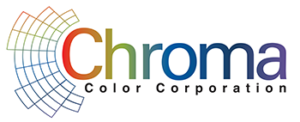According to a report authored by Research Nester, the global color concentrate market will achieve a 7% CAGR during the 10 year-period of 2017-2027. This growth will lead to a projected market value of $6.5 Bn by 2027. The growing demand originates from various end-use industries including consumer goods, packaging, construction, and automotive. The packaging industry sub-segment continues to lead the growth demand for color concentrates.
https://www.researchnester.com/reports/color-concentrates-market/1149
What Are Color Concentrates?
Historically the most common form of Color Concentrates (a.k.a. masterbatches) are colored plastic pellets. These concentrated colored pellets are typically built to contain 15-50% of specially selected pigments and additives. The remainder of the recipe is a blend of carrier resin, process aids and binders to support consistency within the virgin base resin.
The initial consideration when designing a plastic component is ensuring the base resin AND the color concentrate are suitable for the selected forming process. Common process examples include injection mold, blow mold, injection stretch blow, compression mold and extrusion.
Why?
Each process example will introduce different performance stresses. For example, during the injection molding process the selected resins, pigments, dyes, and additives must withstand extreme thermal heat, along with increased shear heat generated as the molten material is injected into the mold.
The combined Resin/Color Concentrate blend must also be suitable for its environment. It might need additives to screen out ultra-violet rays, or antioxidants and other stabilizers to protect against polymer degradation, which can lead to discoloration and product failure.

Alternate Path… 100% Pre-Color Compound
Although not largely used, 100% Pre-Color Compound is considered the easiest path to achieve a colored plastic component. Pre-Color Compound provides the desired end-use color already incorporated within the base resin. This eliminates the need for material blending on the production floor. Pre-Color is often used for very small-size molded components, as the 100% use rate eliminates potential part-to-part color variation.
However, this convenience comes at a very high overall cost and often requires keeping considerable inventory on-hand due to typical industry minimum order requirements. Even with good forecasting, there is a looming threat a program reaches the end of its sales cycle before the pre-color compound inventory is fully depleted.
Color Concentrate Technology Options
The two most widely available choices for Color Concentrates (masterbatches) are either Pellet or Liquid delivery systems. The question for processors becomes, which is the better option?
Both technologies provide different advantages and challenges. Below is a brief overview of both liquid and traditional pellet options, followed by the introduction of new pelletized color technology solutions.
Liquid vs Pellet
LIQUID Colorant for manufacturing plastic products:
Advantages:
- Effective at extremely low use rates, best suited for tints
- Less heat history than pellet concentrates
- Coloring costs can be lower than conventional pellet color
Challenges:
- Specialized pumps are required
- Several pigment and additive limitations
- Production interruptions caused by container changeover
- Screw slippage at high use rates, particularly with opaque and pearl
- Limited application with engineered polymers
- Not suitable for extrusion blow molding of HDPE bottles
- Increased housekeeping issues related to spill cleanup and special storage of dedicated hoses
- Limited shelf life due to product separation, leading to increased costs and wasted color
- Issues with sustainability due to wasted/residual product and packaging that often requires landfill disposal which is a hidden additional cost

PELLET Colorant for manufacturing plastic parts and products:
Advantages
- Pellets are easy to handle and can be dosed accurately through readily available volumetric and gravimetric feeding systems
- Excellent dispersion
- Reduced housekeeping and maintenance
Challenges
- Conventional pellet colorants are typically more costly than liquid colorant due to high let down ratios (LDR)
Ideally, a winning program requires a colorant format that provides all the Advantages… without any of the Challenges.

Introducing Chroma Color Corporation’s patented G-Series technologies.
Chroma’s G2®, UltraPETTM and G3® technologies provide vibrant, long-lasting colors essential to meet end-user demands within a convenient Pellet format at the price point in-line with Liquid.
Chroma Color G-Series
Key Attributes of G2® Color Include:
- Patented carrier system technology
- G2® provides substantial Cost-to-Color savings
- Highest loadings of Organic and Pearlescent Pigments in the industry
- Highest loadings of UV and AO custom colors in the industry
- G2® can provide greater than 10% cycle-time reduction
- Reduced environmental impact, resulting from a decrease in production energy, packaging materials, and CO2 emissions

Chroma Color’s G Series Used for Red Lid
Key attributes of UltraPET®
Color Include:
- Innovative proprietary carrier system
- UltraPET® technology allows for component processing at much lower temperature than conventional PET pellet concentrates. Lower process temperatures enable molders to significantly reduce potential heat stress on the pigments and dyes
- UltraPET® offers exceptionally high loadings of Pigments and Dyes, allowing processors significant economic benefits from low use rates
- The extremely low use rates (LDR) provided by UltraPET™ can often eliminate the need for drying and recrystallization common in conventional PET pellet concentrates
- UltraPET® concentrates are available in Mini-Beads for applications sensitive to color dispersion, particularly low-level Tints. Mini-Beads provide higher pellets/gram, increasing pellet distribution, promoting faster incorporation rates, leading to improved color dispersion
- UltraPET® concentrates are resistant to alcohol and can be formulated in both non-FDA and FDA compliant packages
- UltraPET® pellet concentrates reduce housekeeping costs compared to the difficulties associated with liquid color
- NEW – Chroma Color innovation has developed a unique UltraPET® explicitly designed for use with recycled materials. UltraPET PCR allows brand owners to further increase the levels of PET PCR within their package, supporting increased Sustainability Goals.
Key attributes of G3® Color Include:
- Patented manufacturing process technology
- G3® manufacturing process can be utilized across all major polymers AND carrier systems (standard, G2® or UltraPET™) providing processors the ultimate cost-to-color savings opportunity
- G3® achieves a further 20% (or more) increased pigment loading levels in polyethylene and polypropylene – without compromising pigment dispersion
- G3® offers formulations with 40-45% loading of dyes in HIPs, PET, Nylon, Crystal Styrene and Acrylic
- G3® offers formulations with 50+% pearlescent pigment loadings, nearly doubling the historical industry standard of ~30%
Summary:
As your team reviews various color concentrate options or establishes new performance standards for your plastic products, turn to a trusted colorant supplier to guide you through the process. Chroma Color Corporation can support your successful product launch, with easy processing, and adherence to all environmental and regulatory requirements… using unique patented technologies that enhance aggressive cost conscience programs.
About Chroma Color:
Chroma Color Corporation is a technology-leading specialty color and additive masterbatch supplier delivering critical aesthetics, technical innovations, and sustainable solutions to plastics processors and brand owners. Chroma Color’s growth strategy includes robust organic and inorganic growth and having made six acquisitions over the last three years. Chroma’s extensive technical leadership and manufacturing expertise, coupled with its game-changing colorant and light management technologies, have delighted customers for over 50 years. https://chromacolors.com/
To download a pdf of this article:

